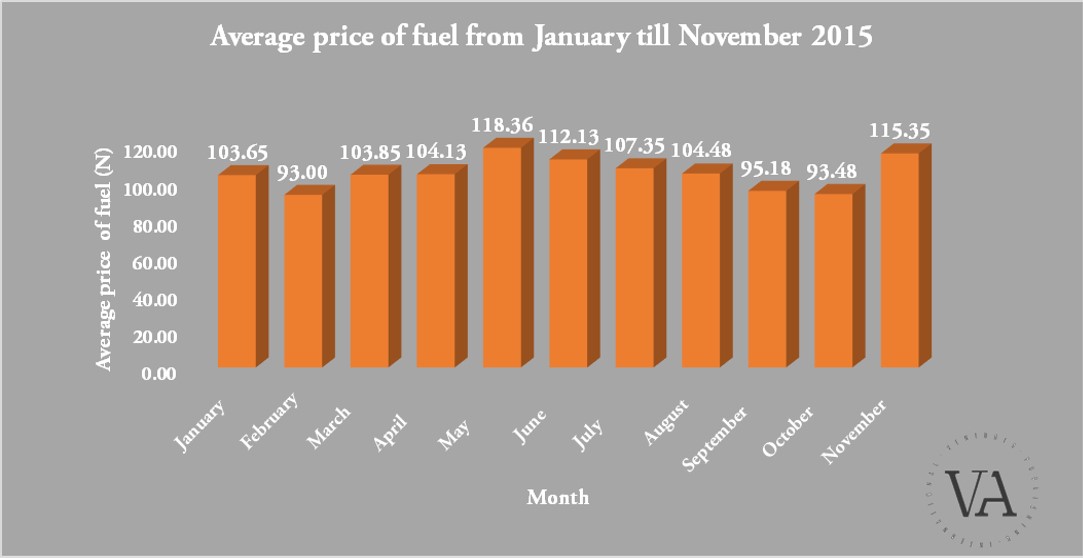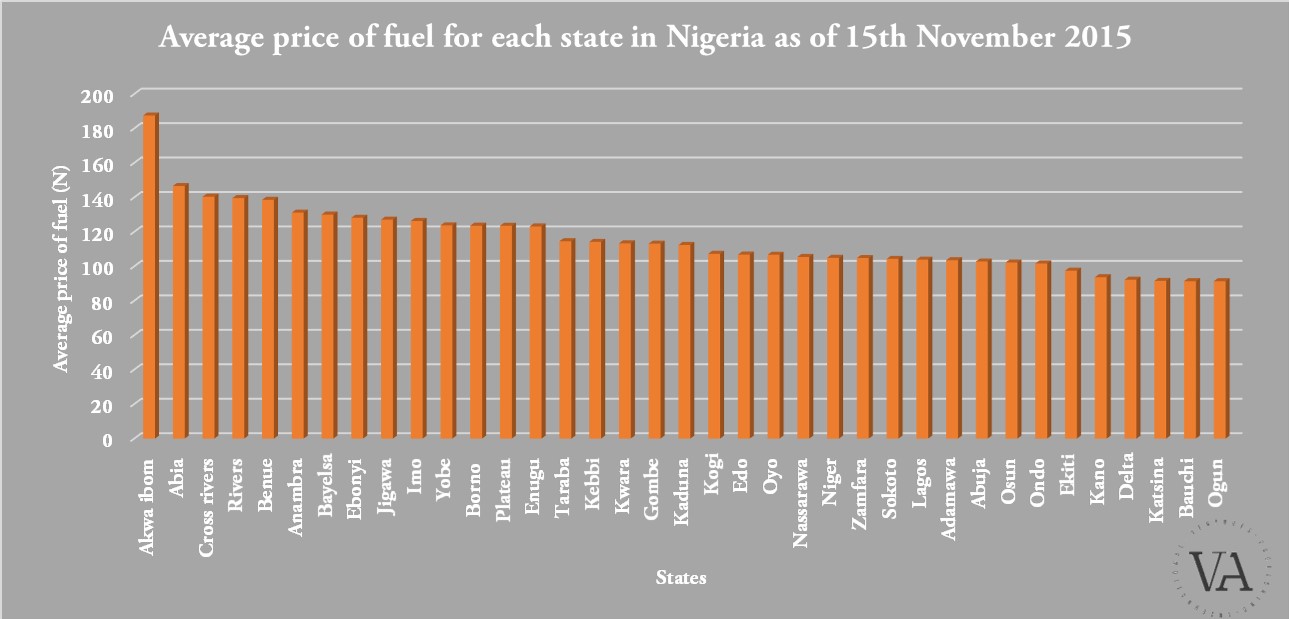Last week, the Nigerian Bureau of Statistics (NBS) released its monthly report on Nigeria’s inflation rate. According to the report, the rate of inflation in the country increased from 9.3 percent in October to 9.4 percent in November 2015.
According to the report, these are the two main reasons why the inflation rate increased by 0.1 percent so far.
Higher prices in food and beverages
From the NBS report, the hike in the rate of inflation can be traced to higher prices within the food and non-alcoholic beverages sector. Food prices, as recorded by the Food Sub-Index, increased to the highest rate recorded this year. Despite relative moderation of these rates in the past three months, prices increased by 0.2 percent from October to 10.3 percent. The index was pushed higher as a result of increases recorded in the Fish, Bread and Cereals, Vegetable, Milk, Cheese and Meat groups.
Fuel Scarcity
The country was hit by a crippling fuel scarcity over the past month which is still unresolved. The average price of fuel has increased by 23.4 percent, from N93.4 in October to N115.35 in November, which is the highest average price paid by households this year. With the fuel price at N115.35, Nigerians paid more than 30 percent of the official pump price when compared to the open market price of N96.10.
According to the NBS report, no Nigerian state in the month of November has sold fuel at the normal price of N87. Akwa Ibom had the highest pump price of N187.5 followed by Abia and Cross River with N146.59 and N140.4 respectively, while Ogun, Bauchi and Katsina had the lowest pump prices with N91.33, N91.33 and N91.5 respectively.
In Lagos, Nigeria’s commercial capital, pump price was sold at an average of N103.84 which is 19 percent higher than the official price.
Unfortunately, these factors have contributed to the increase in the rate of inflation across the country.
For more insight, click to listen to the podcast below










